Ketamine Therapy for Intrusive Flashbacks and Nightmares


August 4, 2025
Understanding How Ketamine Targets PTSD Symptoms
Post-Traumatic Stress Disorder (PTSD) can manifest through severe intrusive flashbacks and nightmares, significantly impairing quality of life. Recent advances in psychiatric treatment have spotlighted ketamine as a promising option, especially for cases resistant to conventional therapies. This article explores how ketamine therapy works, its neurobiological effects, efficacy, safety, and ongoing research efforts aimed at optimizing its use for trauma-related symptoms.
What Can Patients Expect During Ketamine Therapy for PTSD?

How is ketamine administered for PTSD?
During ketamine therapy for PTSD, patients typically receive infusions of ketamine in a safe, controlled clinical environment. The most common method is through intravenous (IV) infusion, with a trained medical professional overseeing the process. The infusion sessions usually last about 40 minutes to an hour. This administration is carefully monitored to ensure safety and comfort.
What is the duration and setting of treatment?
Patients generally undergo a series of treatments scheduled over a few weeks—commonly four to six sessions spread across two to three weeks. After the initial course, some patients may receive maintenance infusions every few weeks to prolong benefits. The therapy is usually conducted in outpatient clinics, allowing patients to return home shortly after each session.
How does ketamine combine with psychotherapy?
Many treatment protocols include combining ketamine infusions with trauma-focused psychotherapy, such as exposure therapy or therapeutic integration sessions. This combination can enhance emotional processing, help break trauma-related thought loops, and promote neural rewiring for lasting relief.
What is the timeline for symptom relief?
Patients often experience rapid improvements, with some noticing reduced intrusive memories, nightmares, and hyperarousal within hours or days after their first infusion. While initial benefits may last days or weeks, repeated treatments can extend symptom relief, sometimes lasting several weeks. The quick onset of action makes ketamine especially valuable for severe cases needing urgent symptom reduction.
What monitoring and side effects are expected?
During treatment, patients are closely monitored for side effects such as dissociation, dizziness, nausea, or visual distortions. These effects are generally short-lived, often resolving within hours. Safety protocols include continuous supervision by medical staff to manage any adverse reactions. Overall, ketamine therapy is well-tolerated when administered by trained professionals, with serious adverse effects being rare.
Both the administration process and the supportive environment help maximize benefits while minimizing risks. When combined with psychotherapy, ketamine can be a promising option for those suffering from treatment-resistant PTSD, facilitating faster symptom relief and emotional healing.
Neurobiological Mechanisms and Neuroplasticity Enhancement
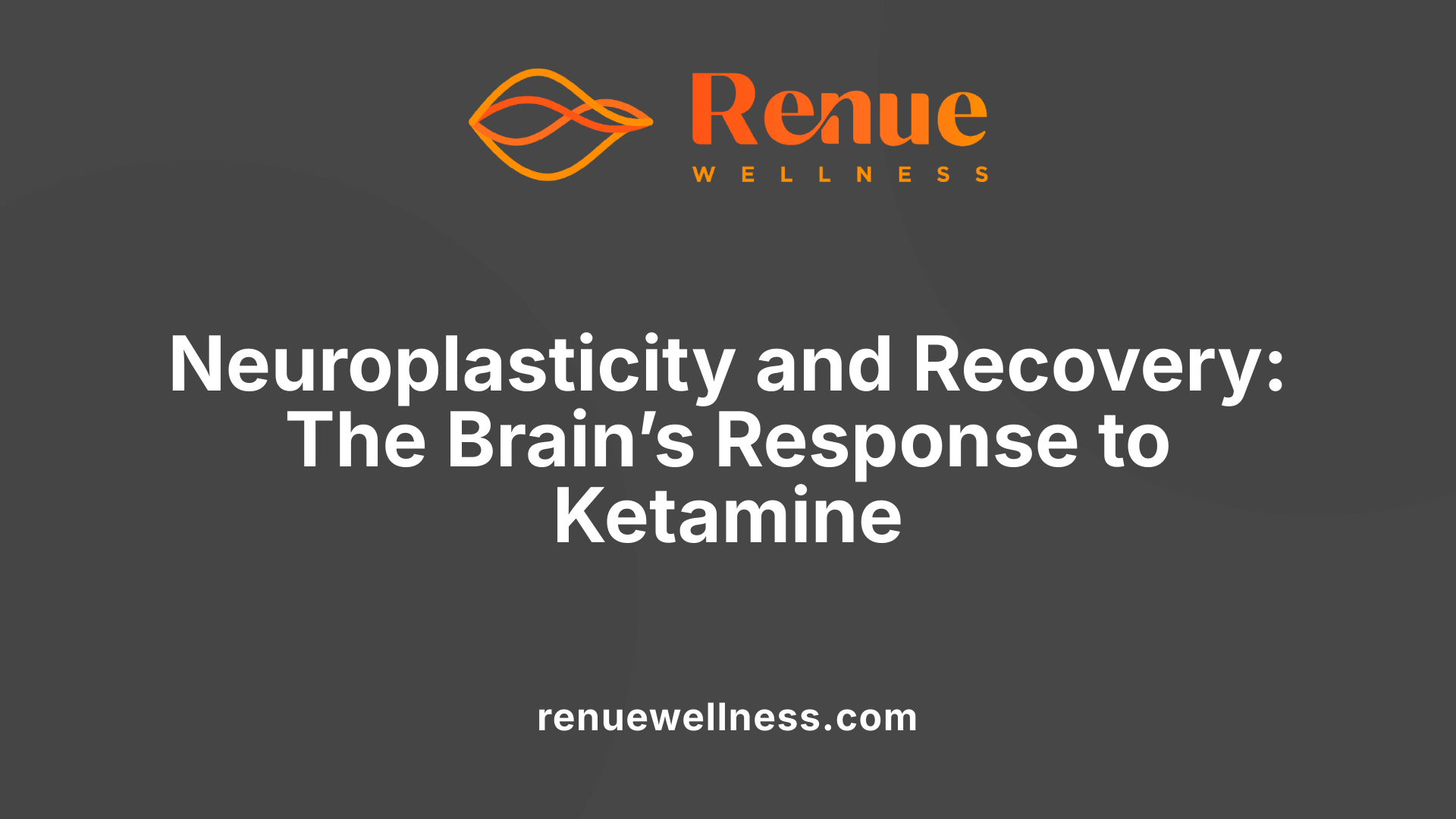
How might ketamine therapy address complex PTSD symptoms and promote neuroplasticity?
Ketamine exerts its therapeutic effects on PTSD primarily through its influence on brain neuroplasticity—the brain’s ability to change and reorganize neural pathways. Its action as an NMDA receptor antagonist reduces excessive glutamate activity, which is often disrupted in PTSD, especially in regions like the amygdala, hippocampus, and prefrontal cortex. By modulating these glutamate receptors, ketamine enhances synaptic plasticity, allowing new neural connections to form and facilitate the extinction of fear responses.
Research demonstrates that ketamine increases levels of brain-derived neurotrophic factor (BDNF), a critical protein for supporting neuronal growth, survival, and plasticity. Elevated BDNF levels aid hippocampal plasticity, promoting the repair of neural circuits compromised by trauma-related stress. Furthermore, ketamine influences signaling pathways such as GSK-3β/GR, which support neural structural changes and resilience.
In addition, neuroimaging studies reveal that ketamine reduces hyperactivation of the amygdala—a core region involved in fear and emotional responses—while restoring connectivity between the prefrontal cortex and limbic areas. This normalization helps patients better regulate their emotional reactions and diminishes trauma-related hypervigilance.
An important aspect of ketamine’s neurobiological impact is the creation of a transient window—typically within 24 to 48 hours after treatment—in which psychotherapy can be especially effective. During this period, neuroplasticity is heightened, making it an optimal time for emotional and cognitive restructuring. This synergy enables patients to revisit and process traumatic memories with less fear and resistance, promoting lasting recovery.
In summary, ketamine’s ability to promote synaptic connectivity, support neurotrophic factors, and modulate neural circuits provides a neurological foundation for alleviating complex PTSD symptoms while fostering the brain’s capacity to heal and adapt.
Mechanisms by Which Ketamine Alleviates PTSD Symptoms
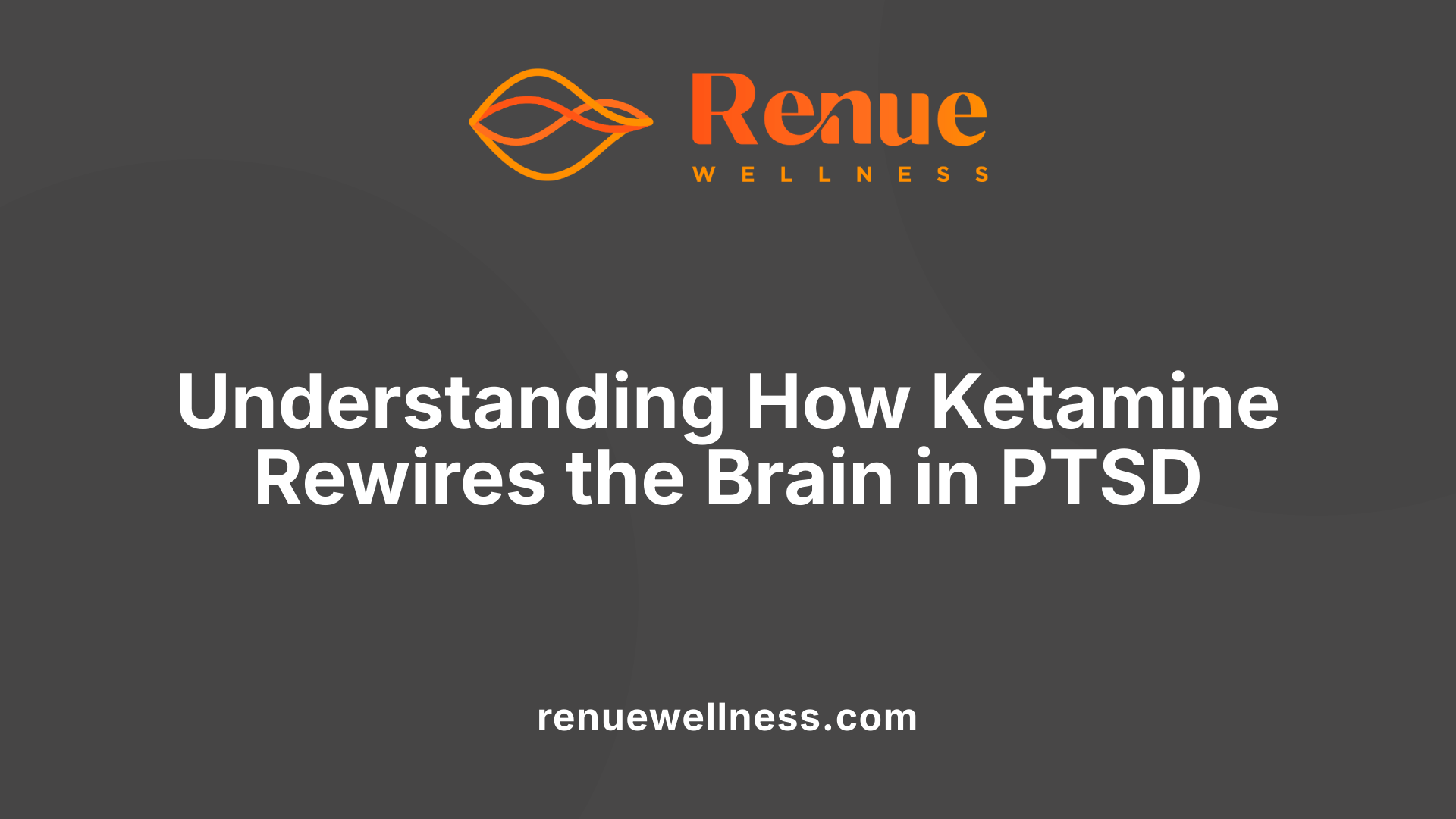
How does ketamine therapy work for PTSD symptoms, including intrusive flashbacks and nightmares?
Ketamine treatment for PTSD mainly operates through its action on the brain’s glutamate system. Specifically, it blocks NMDA (N-methyl-D-aspartate) receptors, which are involved in neural communication related to stress and memory. This blockade reduces hyperactivity in brain circuits that process trauma, thereby decreasing symptoms like flashbacks and nightmares.
Beyond receptor blocking, ketamine stimulates the release of glutamate, the brain’s primary excitatory neurotransmitter. This increase activates other receptors, such as AMPA receptors, fostering neuroplasticity—the brain’s ability to form new connections. This process helps 'reset' maladaptive neural pathways that have become entrenched due to trauma.
Another crucial aspect is ketamine’s ability to promote the formation of new synapses, strengthening emotional regulation and resilience. It enhances levels of brain-derived neurotrophic factor (BDNF), a protein vital for nervous system growth and healing. Elevated BDNF supports the reconsolidation of traumatic memories into less disturbing forms, making them easier to process.
Because of these mechanisms, patients experience rapid symptom relief—sometimes within hours of infusion—which can significantly improve quality of life. When combined with psychotherapy, ketamine therapy becomes a powerful approach for addressing core PTSD symptoms, including intrusive thoughts, hyperarousal, and emotional numbing.
Safety Profile and Potential Risks of Ketamine Treatment
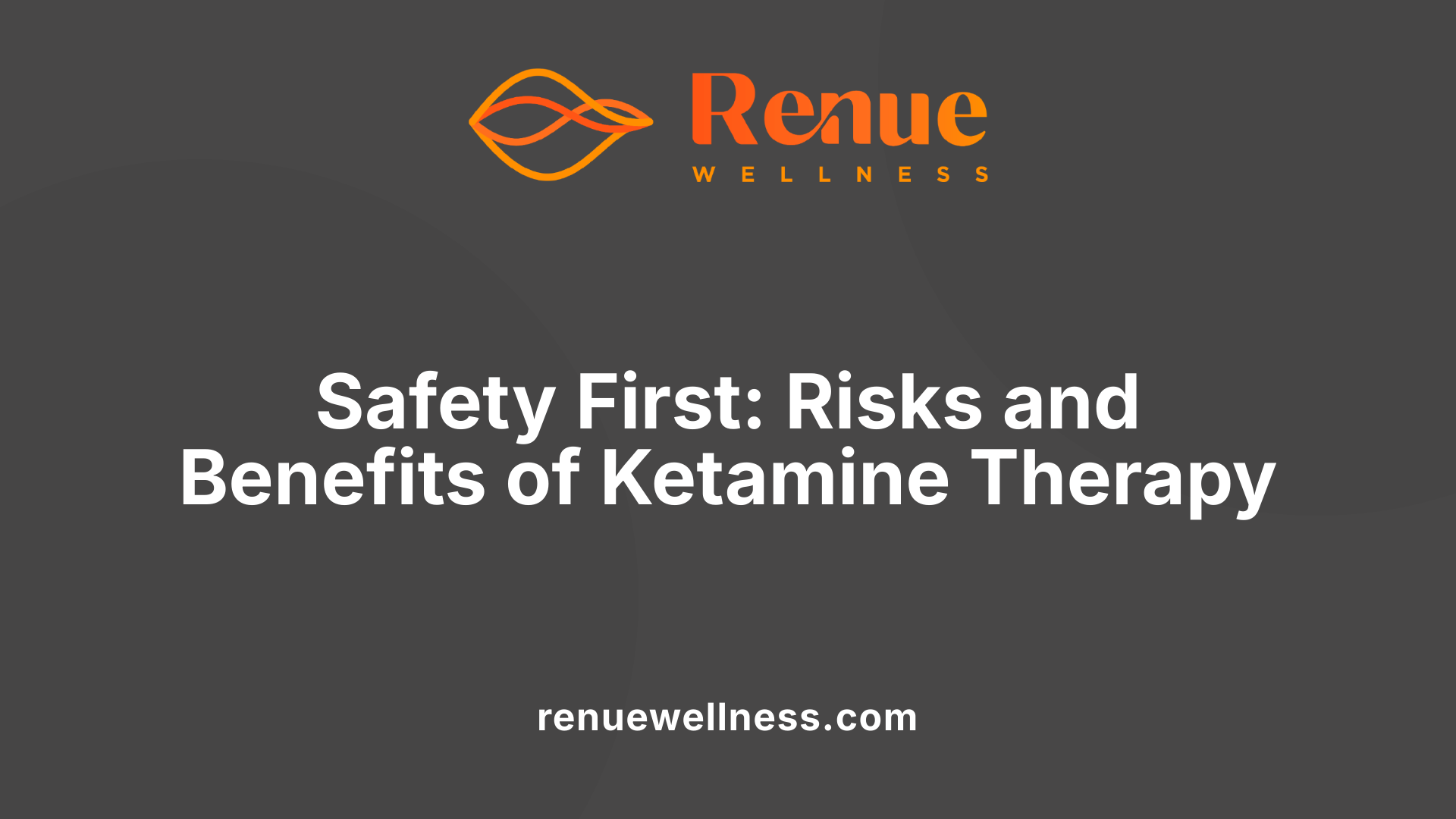
Is ketamine treatment a safe option for PTSD, and what are the potential risks?
Ketamine treatment has shown to be a promising and generally safe option for managing symptoms of treatment-resistant PTSD. It is typically administered in controlled clinical environments under professional supervision, which helps ensure patient safety.
Most reported side effects are short-lived and include dissociation, dizziness, headache, nausea, and visual distortions. These transient effects usually subside quickly after the session and are considered manageable. Serious adverse events are rare, especially when ketamine is given according to established protocols.
Monitoring procedures are an integral part of ketamine therapy. Patients are closely observed during and after infusions to watch for any adverse reactions. Clinicians measure vital signs, such as blood pressure, closely regulating doses to minimize risks like hypertension.
While ketamine’s safety profile is generally acceptable, there is a potential for misuse and abuse, especially in unsupervised settings. This emphasizes the importance of treatment being conducted in licensed clinics with trained professionals.
In outpatient settings, strict safety measures and monitoring reduce the risk of adverse outcomes. The controlled environment provides a safety net, ensuring that side effects are addressed promptly.
Overall, when used appropriately, ketamine offers a beneficial route for reducing PTSD symptoms, with a favorable safety profile supported by scientific research and clinical practice. Nevertheless, awareness of possible risks is essential, and treatment should always be carried out under medical supervision.
Current Research and Future Directions in Ketamine for PTSD
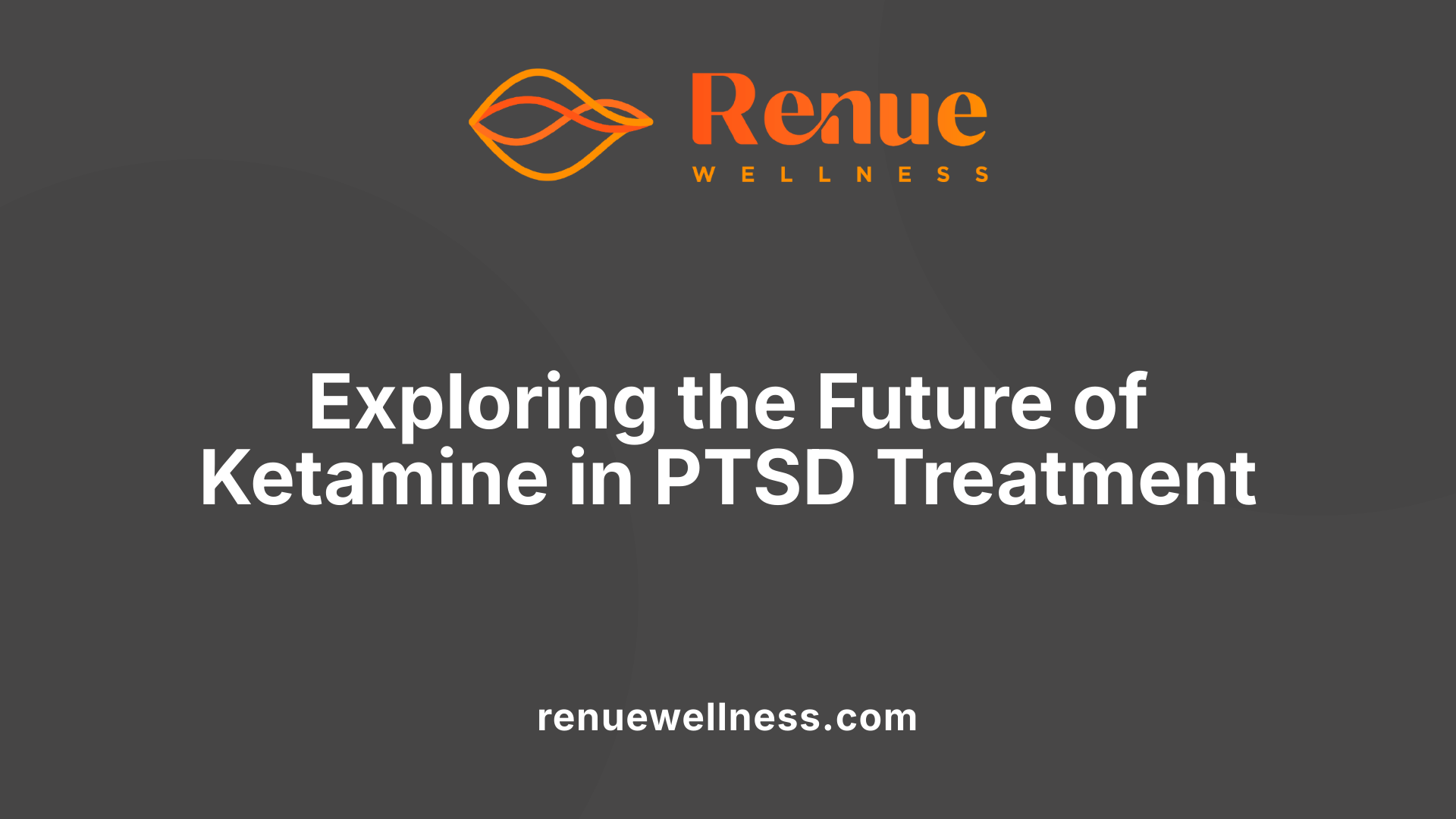
Are there ongoing studies or new research exploring ketamine's role in managing PTSD?
Yes, current research continues to explore how ketamine can help treat PTSD, especially in cases resistant to traditional therapies. Clinical trials are ongoing, with investigations into different ways to administer the drug—such as intravenous infusions, oral formulations, and combining ketamine treatment with psychotherapy.
Recent studies have shown promise, with many patients experiencing quick relief of symptoms like flashbacks, nightmares, and hypervigilance. Researchers are also delving into how ketamine impacts the brain’s neural circuits and neurotransmitter systems, aiming to better understand its therapeutic mechanisms.
Efforts are underway to determine optimal dosing schedules, treatment frequencies, and long-term safety profiles. Several systematic reviews emphasize the need for larger, controlled studies to confirm these initial positive findings.
Overall, the outlook is encouraging, with ketamine's potential to dramatically improve quality of life for individuals with PTSD. While more research is required, the current trajectory suggests that ketamine could become a standard part of PTSD treatment options in the near future.
Efficacy and Safety Evidence from Clinical Studies
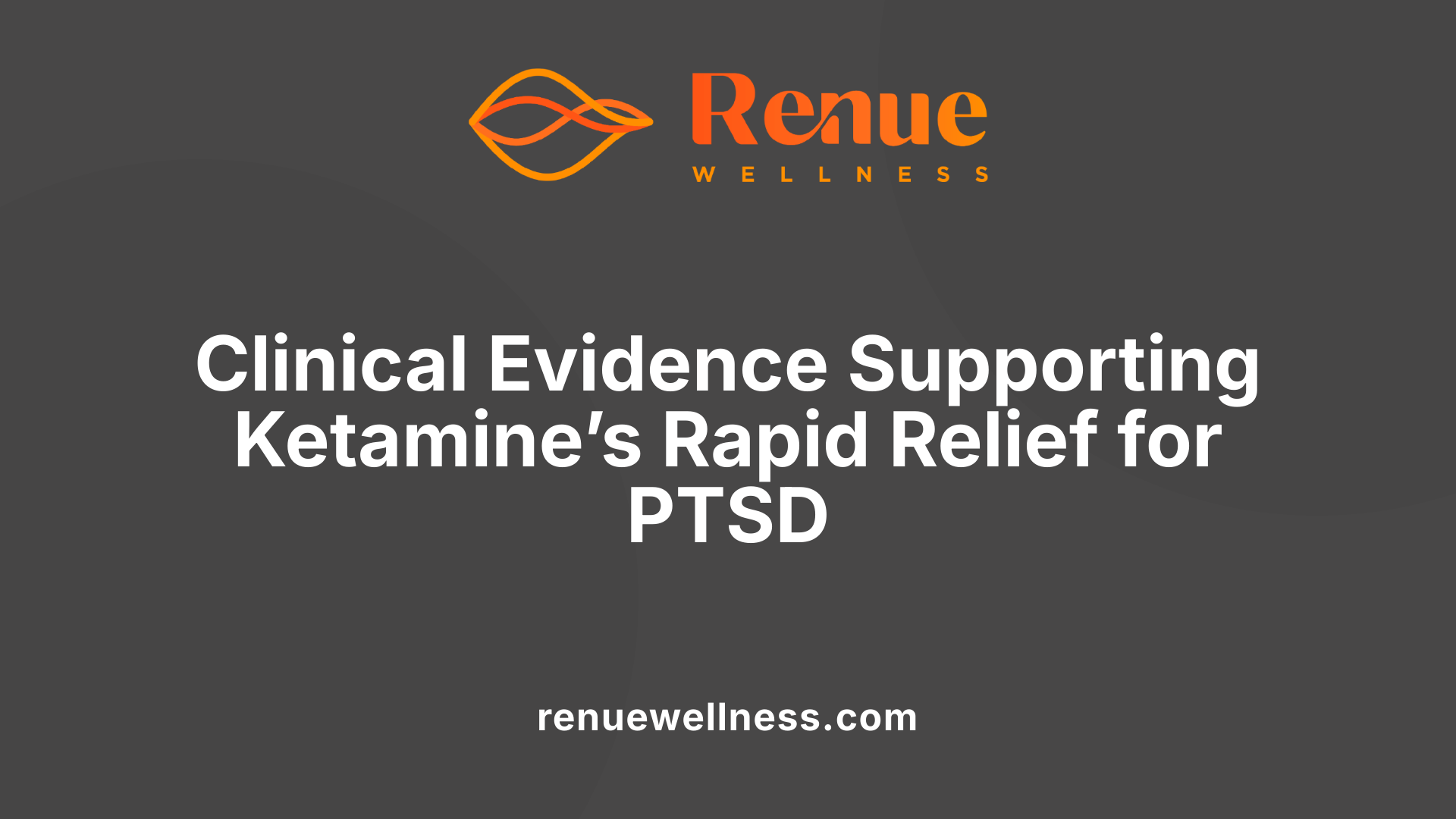 Research on ketamine as a treatment for PTSD reveals promising results supported by several clinical studies. Most notably, randomized controlled trials have demonstrated that intravenous ketamine can significantly reduce PTSD symptoms, with some patients experiencing symptom relief within hours to days after treatment.
Research on ketamine as a treatment for PTSD reveals promising results supported by several clinical studies. Most notably, randomized controlled trials have demonstrated that intravenous ketamine can significantly reduce PTSD symptoms, with some patients experiencing symptom relief within hours to days after treatment.
In terms of symptom reduction, studies report that ketamine can lead to a 60-100% decrease in symptoms such as flashbacks, intrusive thoughts, hypervigilance, and emotional numbness. For instance, one trial showed that patients experienced sustained improvements lasting up to two weeks, while others noted benefits that extended longer with repeated infusions.
Long-term outcomes are still being explored, but preliminary data suggest that repeated treatment sessions may promote neural plasticity — making lasting change more feasible. Increased levels of brain-derived neurotrophic factor (BDNF) and modifications in brain connectivity are thought to underpin these changes.
Regarding safety, ketamine is generally well-tolerated when administered under medical supervision. Common transient side effects include dissociation, dizziness, headache, nausea, and visual disturbances, which tend to resolve quickly after infusion. Serious adverse events are rare, and careful monitoring further minimizes risks.
While many patients with treatment-resistant PTSD benefit from ketamine, some populations, like veterans in certain studies, show mixed results, indicating that individual factors influence treatment response. Combining ketamine with psychotherapy, particularly exposure therapy, is an emerging approach that may enhance effectiveness.
Overall, current evidence supports ketamine's potential as a rapid-acting treatment, especially in cases where traditional therapies have failed. Nonetheless, more large-scale, long-term trials are necessary to fully confirm its safety and sustained efficacy for PTSD management.
The Promise and Future of Ketamine in PTSD Treatment
While ketamine therapy shows significant promise in rapidly alleviating intrusive flashbacks and nightmares associated with PTSD, it remains an emerging treatment requiring further validation through larger studies. Its ability to induce neuroplasticity and modulate traumatic memory pathways positions ketamine as a valuable adjunct in comprehensive trauma therapy. Healthcare providers are increasingly adopting ketamine in specialized clinics, emphasizing safety and individualized treatment plans. Future research aims to optimize protocols, understand long-term effects, and identify the most responsive patient populations, making ketamine a potentially transformative option for treatment-resistant PTSD.
References
- Ketamine as treatment for post-traumatic stress disorder: a review
- Ketamine Therapy for PTSD - Acheron Psychiatry
- Ketamine and PTSD: A Ray of Hope for Trauma Survivors
- Ketamine for Treatment of Posttraumatic Stress Disorder
- Ketamine Therapy for PTSD | The Drake Center
- Ketamine Infusion Therapy for PTSD - Ascend Health Center
- How Ketamine helps the Body Release Trauma
Recent Posts
Conditions Treated
AnxietyDepressionOCDPTSDPostpartum DepressionPain ManagementSubstance AbuseSuicidal IdeationOur Location


